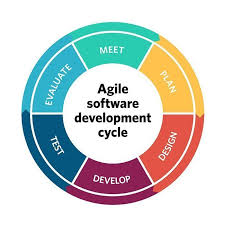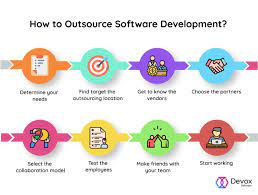The Benefits of Agile Methodology in Software Engineering
Agile methodology is a popular approach to software development that emphasizes flexibility, collaboration, and iterative progress. Unlike traditional waterfall methods, agile methodology focuses on delivering working software in small increments, allowing for continuous feedback and adjustments throughout the development process.
One of the key benefits of agile methodology is its ability to adapt to changing requirements and priorities. By breaking down projects into smaller tasks or user stories, teams can quickly respond to new information or stakeholder feedback without derailing the entire project.
Another advantage of agile methodology is improved collaboration among team members. With regular stand-up meetings, sprint reviews, and retrospectives, team members are encouraged to communicate openly, share ideas, and address any issues that may arise during development.
Furthermore, agile methodology promotes a customer-centric approach by involving stakeholders in the development process. By delivering working software at the end of each iteration or sprint, stakeholders can provide valuable feedback early on and ensure that the final product meets their expectations.
In conclusion, agile methodology offers numerous benefits for software engineering teams looking to improve productivity, quality, and customer satisfaction. By embracing flexibility, collaboration, and iterative progress, teams can deliver high-quality software that meets the needs of both stakeholders and end users.
8 Key Benefits of Agile Methodology in Software Engineering: Flexibility, Collaboration, and Quality
- Increased flexibility to adapt to changing requirements
- Enhanced collaboration among team members
- Faster delivery of working software in small increments
- Continuous feedback loops for quick adjustments
- Improved stakeholder engagement and satisfaction
- Better risk management through incremental development
- Higher quality products due to frequent testing and reviews
- Greater transparency and visibility into project progress
Challenges of Agile Methodology: Navigating Unpredictability, Collaboration Demands, Transition Hurdles, and Documentation Gaps
- Lack of predictability in terms of project timelines and final deliverables due to the iterative nature of agile development.
- Requires a high level of collaboration and communication among team members, which can be challenging in larger teams or with remote team members.
- Initial setup and training may be required for teams transitioning from traditional waterfall methods to agile, leading to potential productivity dips at the beginning.
- Limited documentation and formalized processes in agile methodology can make it difficult for new team members to onboard quickly and understand the project structure.
Increased flexibility to adapt to changing requirements
One of the key advantages of agile methodology in software engineering is the increased flexibility it provides to adapt to changing requirements. By breaking down projects into smaller tasks and focusing on delivering working software in incremental iterations, agile teams can quickly respond to new information, feedback, or shifting priorities. This flexibility allows for timely adjustments to be made throughout the development process, ensuring that the final product meets the evolving needs of stakeholders and end users.
Enhanced collaboration among team members
Enhanced collaboration among team members is a significant advantage of agile methodology in software engineering. By fostering open communication, regular stand-up meetings, sprint reviews, and retrospectives, agile methodology encourages team members to work closely together, share ideas, and address any challenges as a cohesive unit. This collaborative environment not only improves teamwork but also leads to better decision-making, increased productivity, and ultimately, the successful delivery of high-quality software products.
Faster delivery of working software in small increments
One of the key advantages of agile methodology in software engineering is its ability to facilitate the faster delivery of working software in small increments. By breaking down projects into manageable tasks or user stories and delivering functional components incrementally, agile teams can provide tangible results to stakeholders sooner. This iterative approach not only allows for continuous feedback and adjustments throughout the development process but also enables teams to respond quickly to changing requirements, ultimately speeding up the overall delivery timeline.
Continuous feedback loops for quick adjustments
One of the key advantages of agile methodology in software engineering is its emphasis on continuous feedback loops, allowing for quick adjustments throughout the development process. By regularly gathering feedback from stakeholders, team members, and end users, agile teams can identify issues early on and make necessary adjustments to ensure that the final product meets expectations. This iterative approach not only improves the quality of the software but also promotes transparency, collaboration, and a customer-centric mindset within the team.
Improved stakeholder engagement and satisfaction
One of the significant advantages of agile methodology in software engineering is the improved stakeholder engagement and satisfaction it brings. By involving stakeholders throughout the development process and delivering working software in short iterations, agile teams can gather feedback early and often. This continuous collaboration ensures that stakeholders’ requirements are met, leading to greater satisfaction with the final product. Stakeholders feel more invested in the project’s success and have a sense of ownership, ultimately resulting in a higher level of engagement and overall satisfaction with the software development process.
Better risk management through incremental development
One significant advantage of agile methodology in software engineering is its ability to enhance risk management through incremental development. By breaking down projects into smaller, manageable increments, teams can identify and address potential risks early on in the development process. This iterative approach allows for continuous monitoring and adjustment, reducing the likelihood of major setbacks and ensuring that risks are mitigated effectively throughout the project lifecycle.
Higher quality products due to frequent testing and reviews
One of the key advantages of agile methodology in software engineering is the ability to deliver higher quality products through frequent testing and reviews. By incorporating testing and reviews into each iteration or sprint, teams can identify and address issues early on, leading to a more robust and reliable end product. This iterative approach allows for continuous improvement based on feedback, ensuring that the final product meets high standards of quality and functionality.
Greater transparency and visibility into project progress
One significant advantage of agile methodology in software engineering is the greater transparency and visibility it provides into project progress. By breaking down tasks into smaller increments and conducting regular reviews, stakeholders and team members have a clear understanding of the project’s status at any given time. This transparency fosters better communication, enables early issue detection, and allows for timely adjustments to ensure project success. Ultimately, the increased visibility offered by agile methodology enhances collaboration and trust among team members, leading to more efficient and effective software development processes.
Lack of predictability in terms of project timelines and final deliverables due to the iterative nature of agile development.
One significant drawback of agile methodology in software engineering is the lack of predictability in terms of project timelines and final deliverables. The iterative nature of agile development, with its focus on adapting to changing requirements and delivering working software in small increments, can make it challenging to accurately estimate when a project will be completed and what the final deliverables will look like. This unpredictability can be frustrating for stakeholders who require clear timelines and well-defined outcomes, potentially leading to dissatisfaction and uncertainty throughout the development process.
Requires a high level of collaboration and communication among team members, which can be challenging in larger teams or with remote team members.
One notable drawback of agile methodology in software engineering is the significant demand for a high level of collaboration and communication among team members. This can pose challenges, especially in larger teams or when working with remote team members. Coordinating efforts, sharing information effectively, and ensuring everyone is on the same page can be more complex in such scenarios. The need for constant communication and alignment may lead to delays, misunderstandings, or inefficiencies that can impact the overall progress and success of the project.
Initial setup and training may be required for teams transitioning from traditional waterfall methods to agile, leading to potential productivity dips at the beginning.
Transitioning from traditional waterfall methods to agile methodology in software engineering may present a challenge in terms of the initial setup and training required for teams. This transition period can lead to potential productivity dips as team members adjust to the new processes, tools, and collaborative practices associated with agile development. The time and effort needed to onboard team members and establish new workflows may temporarily impact productivity levels before the benefits of agile methodology can be fully realized.
Limited documentation and formalized processes in agile methodology can make it difficult for new team members to onboard quickly and understand the project structure.
One significant drawback of agile methodology in software engineering is the limited documentation and formalized processes, which can pose challenges for new team members trying to onboard quickly and grasp the project structure. Without comprehensive documentation outlining the project’s history, requirements, and design decisions, new team members may struggle to understand the context and rationale behind existing code or features. This lack of formalized processes can lead to confusion and inefficiencies, potentially slowing down the onboarding process and hindering the team’s overall productivity.




